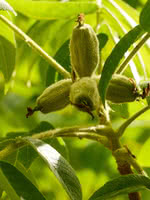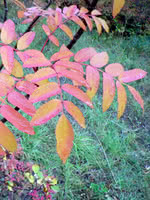Mon-Fri 9am - 5pm Mountain time
Western Mountain Ash vs Butternut (White Walnut)
Juglans cinerea
Sorbus scopulina
NOT AVAILABLE THIS SEASON - MIGHT RETURN
Butternut is one of the few walnut varieties native to Canada. The nuts are sought after for their mild, sweet, and oily taste. Ensure this tree is planted in full sun and well-drained soil for best results.
Butternut is self-fertile but it has better yields when planted near other butternuts. It can survive in zone 2, but reliably produces nuts in zone 3.
A top CO2 absorbing species. Experts think this tree may help climate change more than others.
Western Mountain Ash is a popular ornamental tree native to the western part of North America. Its attractive, white clusters of flowers bloom in early summer, making way for red, yellow or orange fruit in the fall. If the fruit doesn't catch your eye, Western Mountain Ash's autumn colours will capture your–and the birds's–attention.

